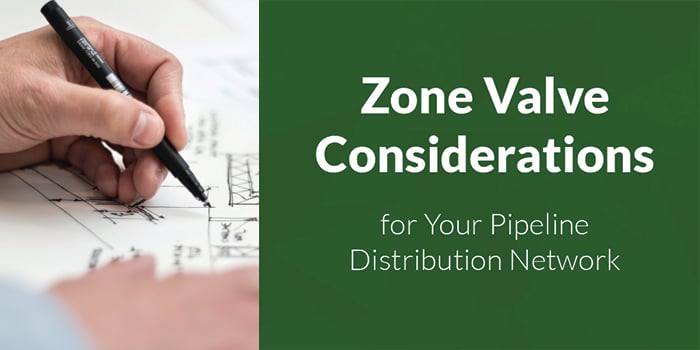
Zone valves are an integral component of your medical gas system.
They allow for the isolation of specific areas of the system in the event of an emergency, required maintenance, or planned shutdowns related to renovations and modifications.
Incorrect locations, out-of-date labeling, or potential obstructions could result in disaster if this otherwise static asset is not appropriately managed. It is essential to be mindful of the zone valve requirements and considerations below to ensure the effective operation of this vital utility system.

NFPA 99 - Zone Valve Requirements and Interpretation
While NFPA 99 requirements are generally straightforward, some specifications can lead to additional questions. From the 2018 Edition, NFPA 99 5.1.4.6.1 outlines the following requirements of zone valves:
- They shall be installed, so a wall intervenes between the valves and the outlets/inlets it controls.
- They shall be readily operable from a standing position.
- They shall be visible and accessible at all times.
- They shall not be hidden behind ordinarily open or closed doors, or otherwise hidden from view.
- They shall not be installed in a room with the outlets/inlets they control.
- They shall not be installed in locked rooms or areas.
Taking a closer look at these requirements, we can identify some left open areas for interpretation or require some additional planning. For instance, there is no maximum height requirement for installing a zone valve, only that it be operable from a standing position. Annex A of NFPA 99 goes on to provide some additional explanation that a standing position refers to an average-height individual with their feet on the floor.
- But how tall is an average-sized person?
- Do their feet need to be flat on the floor?
- How high above them can they effectively reach and operate the valve?
These are questions worth asking, particularly when making modifications to an existing system where limitations of wall space and wall construction, and other utilities behind the wall may make installations more challenging. According to the CDC, the average size American man is 5’9”, while the average woman is 5’4”.
Defaulting to a woman’s average height and assuming an average reach of around 1.13 times your size, the uppermost valve installed no more than 72” above the floor would allow for the valve's safe operation. This also allows an adequate perspective in which the user can accurately view the pressure indicator from that standing position. However, this is a general guideline, and the proper installation may be dictated by your local or state AHJ (Authority Having Jurisdiction).
Proper Zone Valve Locations
Another consideration not to overlook is the importance of your zone valve locations during renovations or additions to existing medical gas systems. It is not uncommon for existing, active valves to be obstructed or hidden within secured construction areas or behind temporary walls erected for infection control.
When planning any such temporary installation, verify all valve locations to ensure staff and emergency personnel always have access, and they don’t require unlocking doors to achieve access. When temporary walls are constructed for renovation projects, valve locations must remain visible and are still accessible.
Correct and updated labeling is also critical to the safe use and operation of zone valves within your facility. Healthcare facilities are ever-changing to meet the demands of patients, regulatory agencies, and overall process improvement. Along with those changes come alterations in room designations, naming conventions, and infrastructure upgrades.
NFPA 99 requires zone valves to label their content, rooms or areas served, and cautionary language to not close or open the valve except in an emergency. In addition to the 2018 edition of NFPA 99, zone valve labeling shall not be affixed to the removable cover glass. These can be swapped out with other valve boxes and result in inaccurate identification.
This is a requirement some accrediting organizations are currently already evaluating.
Additionally, NFPA 99 requires all valves to be updated anytime modifications result in changes to the areas served.
Conclusion
While zone valves are sometimes overlooked as a static component, your medical gas system's safe and effective operation requires ongoing attention and inspection of these assets to assess any apparent risk continually.
Along with proper planning of any construction projects, your zone valves will perform as intended and protect your patients, staff, and visitors.
If you need assistance evaluating your medical gas system, please request a discovery call with a CHT expert today.




